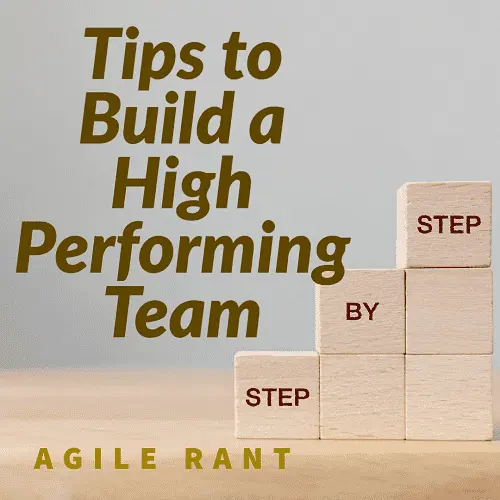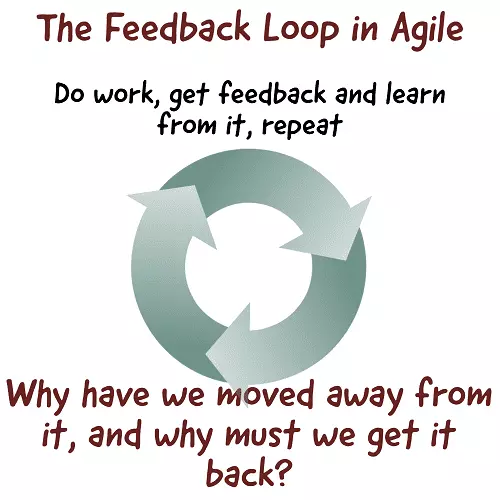
What propels certain teams to soar above the competition while others languish in mediocrity? The answer lies not merely in assembling a pool of skilled individuals, but in the meticulous cultivation of a powerhouse unit. Crafting a high performing team transcends the simple act of assembling talent; it demands the meticulous fostering of essential traits, unwavering behaviors, and proven methodologies.
In fact, team effectiveness is one of the most crucial elements to organizational success.
Source: bluebeyondconsulting.com
What is a high performing team
A high-performing team is like a tightly woven fabric of synergy and shared goals. Team members unite to form a dynamic network, orchestrating actions, decisions, and contributions towards a common success. This shared purpose propels the team with resolute determination.
Yet, the magic of a high-performance team goes beyond aligned goals. It thrives on shared leadership, blurring traditional hierarchies, and empowering each member to influence and contribute. This collaborative approach taps into strengths, fostering innovation and continuous growth.
In this crucible, individual talents aren’t just acknowledged – they’re celebrated and utilized. Recognizing diverse skills, these teams create a collective strength that conquers challenges, seizes opportunities, and transcends individual limits. Together, they forge an alliance that defies boundaries, achieving outcomes beyond what’s possible alone.
Tips to build up that high performing team
A high-performing team is a living testament to the potential of collaboration, a testament where shared goals, shared leadership, and a tapestry of talents converge to create a powerhouse of achievement. It is a realm where the whole is unequivocally greater than the sum of its parts, a realm where individual aspirations fuse into a symphony of collective accomplishment.
Let’s get into the tips to build high-performance teams!
Collaboration skills are utmost for a high performing team
Central to the essence of excellence is the harmonious symphony of collaborative minds. Within this orchestra, each member wields the brushstrokes of their soft skills, crafting a masterpiece of unified effort. They embrace the collective spirit, forging solutions that gleam with brilliance and unraveling complexities like a finely woven tapestry. A team is not just a mere collection of individuals; it is a nexus of shared aspirations, a dance of minds in fluid motion.
The very soul of team membership is intertwined with the art of collaboration. It is the life force that courses through the veins of a well-oiled mechanism. Here, in the realm of high-performing teams, this art is not just mastered—it is elevated to the realm of greatness. These teams are the artisans of unity, blending their talents in a symphonic crescendo that echoes with innovation and accomplishment. Each stride forward is a testament to the mastery of collaboration, a testament to what humans can achieve when they synchronize their efforts and reach for the sublime.
Complimentary skill-sets for a high performing team
Not everyone on the team is experienced in the same things. Having good depth of experience across varied topics and knowledge bases will allow a team to be high-performing. Both because the team won’t have too much knowledge wrapped up in the same things, thus be deficient in others. But by having wide arrays of experience and skills, you often find different aspects of the work that different team members can do well together. Teaming up for best effect.
High performing teams are self-directing
In the realm of high-performance, these teams are the captains of their destiny, gripping the helm of their aspirations with unwavering resolve. Like skilled navigators, they traverse uncharted waters, charting a course through the vast expanse of challenges that lie ahead. The power of self-direction is their compass, guiding them through the intricate tapestry of tasks.
One of the key characteristics of high-performance teams. Teams that align themselves on common goals and go execute are tremendously valuable!
Focused on software products and goals
Team members focused on the software products and how they can be used to meet goals are important. Too often in software and product development, there can be too much effort and focus on arbitrary deliverables and other ancillary details to the real goals. Team members that keep the focus on goals and how they can work towards them are important and truly part of the high-performing team.
High-performance teams know the goals they are striving to reach. Not letting unnecessary items get in the way.
Monetary and non-monetary investments encourage high performance and can complement organizational goals.
Source: blog.hubspot.com
As managers and leadership, help understand goals and get out of the way
This goes to the self-directed team mentioned above. But leadership needs to understand this. Make the goals clear, and then get out of the way. The team will self-organize around the goals and figure out how to achieve them. If goals and expectations are clear, managers and other leaders not on the team don’t need to get involved and micromanage. If they are experts and knowledgeable, they can join the team and help out. But most of the time, they slow down the work. This is a tough conversation to have, as most managers and leaders want to insert themselves in the process as they see fit. That often doesn’t align with a self-organizing and self-directing team though.
It is tough for leaders to get out of the way of their teams. A lot of organizations are not used to this idea. But if you really want team performance to get to another level, building mutual trust in and off the team is critical.
Team members can’t be risk averse
An extremely important idea is that team members need to be willing to take risks. Often, you can not have big wins and valuable work without taking some kind of risk. Risk needs to be measured, calculated and worth it. But team members can’t avoid risk at all costs. Often, individuals will take conservative and safe options only. You also often avoid the big reward then. There has to be a willingness to take the risk, to be a high-performing team.
The successful team can’t take unnecessary risks, but they can’t be risk averse either. A team culture where the team is willing to try new ideas and take responsibility is part of building high-performance teams.
High performing teams are diverse
Embrace the power of team diversity. It’s a catalyst for transformative success. Diverse minds converge, crafting an innovation masterpiece. Ideas combine into grand possibilities, fueled by distinct skills and viewpoints.
Diversity fuels greatness. In collaboration, ideas form the bedrock of innovation. Each contribution enhances collective genius, building brilliance.
Unlock uncharted horizons through diverse teams. Status quo holds no sway here. Varied perspectives forge groundbreaking concepts, paving paths to excellence.
Team members embrace perspectives of others
This is taking team diversity to the next level. As a diverse team is important, but you can’t use all the different ideas if team members don’t embrace each others perspectives. The ability to listen and combine ideas from different perspectives is one of the things that sets high-performing teams apart. They not only have a lot of varied ideas, but they take them and refine and combine them.
The team combines all of their best ideas into new ideas. The new ideas being the sum of the varying perspectives, and truly better because of being combined. Therefore, look for team members that embrace others ideas for the team.
Team members understand the need for discussions and meetings
Communication is key on a team. But sometimes there are things that need to have live discussions, in meetings and in calls. Other times there is information that can be shared via other means. Team members that can understand these differences are important to the high-performing team. As they help streamline communication. Keeping information moving for the most important things, but also sharing the lesser priority information in other ways. It helps keep the team moving, or better yet, doesn’t interrupt them.
An effective team can’t be made up of team members that avoid having discussions. True collaboration and information sharing requires active discussions.
High performing teams give recognition
The last idea I have to help you build the high-performing team is to look for team members that are good at recognizing the good work and effort done by others. High-performing teams work hard, and they take the time to recognize strong performance. This is an important factor as it celebrates success and helps keep up morale.
One of the most common, but underrated aspects of high-performance teams is celebrating the wins. This helps the teams take value and pride in the work they do. A huge part of great team dynamics.
High performing teams are all about the goals
High-performing teams thrive within the realm of goals, where each member bears a profound sense of accountability. These teams are not merely collections of individuals; they are meticulously woven tapestries of alignment and shared purpose. The core of their essence lies in the unwavering commitment to achieve, as they collectively set their sights on ambitious objectives. Each member’s actions, decisions, and contributions harmonize with the overarching goals, orchestrating a symphony of progress that propels the team toward unparalleled success.
Achievement is the lifeblood of high-performing teams, coursing through their veins as they pursue their designated goals with unrelenting determination. These teams are dynamic ecosystems, thriving under the banner of shared aspirations. Every step taken, every project undertaken, is a deliberate stride toward the realization of those objectives. It is the harmony of purpose and the orchestration of efforts that breed their remarkable success. Accountability is their compass, guiding them through challenges and setbacks, and steering them back on course toward the ultimate destination of goal attainment.
In the realm of high-performing teams, goals are not mere checkpoints but rather the North Star guiding their trajectory. The pursuit of these objectives intertwines with the very fabric of their existence, propelling them forward with an unquenchable thirst for accomplishment. Alignment is their beacon, casting a luminous path toward the shared vision. As each member contributes their unique talents and expertise, a mosaic of synergy emerges, each piece contributing to the intricate tapestry of achievement. It is within the crucible of these shared goals that high-performing teams forge their legacy, leaving an indelible mark on the landscape of success.
Last thoughts on the high performing team
In the dynamic landscape of modern organizations, the need for high-performing teams has never been more vital. These teams stand as the vanguards of performance excellence, driving the very pulse of success within an organization. Their existence is not a luxury but a strategic imperative, as they embody the embodiment of quality, value, and goal-focused achievement. High-performing teams are the engines that power an organization’s journey from aspiration to tangible realization.
Look for these common characteristics and leverage the ideas for continuous improvement on your teams.
High-performing teams ignite success within organizations. They architect achievement, elevating the whole through collective skills, determination, and precision. These teams epitomize value creation, resonating beyond roles, breaking silos, and infusing collaboration into their DNA. A ripple effect emerges, enhancing the culture of success.
In today’s business arena, high-performing teams are the cornerstone of sustainable growth. Competition demands agility, innovation, and unwavering quality commitment. Recognizing this, organizations nurture such teams, reshaping industries. The need for high-performing teams is not a choice but a strategic imperative, unlocking unparalleled success and propelling enduring achievement.
A great article about high-performing teams and 5 things they do differently. Check it out here.
This builds a strong culture of collaboration and helps everyone feel valued and connected.
Source: quantumworkplace.com


